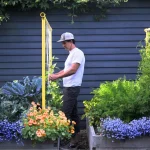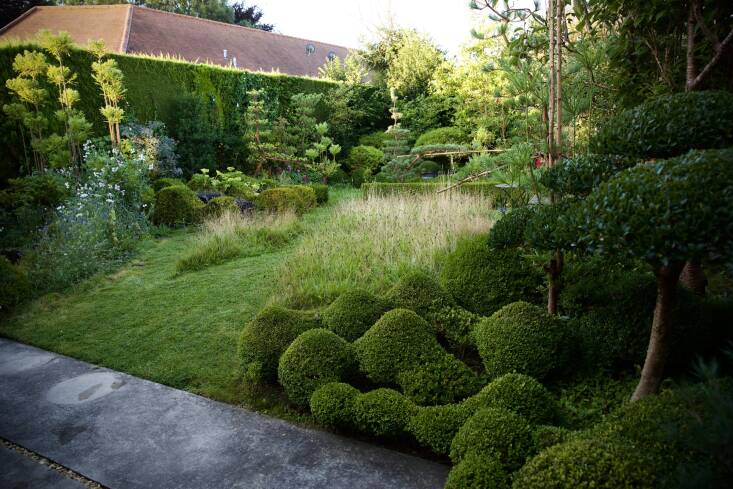We’re all about vertical gardening. Why? Because space in the home garden is almost always a limiting factor. How many times have you said “I wish I had room for a few more basil plants!”. Well, if you take full advantage of your vertical space, by training your vining plants straight up, you might just have enough room next season to make all of your pesto dreams come true.
Growing upward instead of outward might just be one of the simplest ways to grow smarter. Vertical gardening—encouraging your plants to climb instead of sprawl—saves space, reduces pests, and makes gardening (and harvesting) a whole lot easier.
Whether you’re training tomatoes up a string trellis or letting sweet peas climb a net, growing vertically helps both your garden and your back.
What Is Vertical Gardening, Anyway?
Vertical gardening simply means giving your plants something to climb. Most crops grow upward naturally, but vining plants—like tomatoes, cucumbers, and beans—need extra support to stay off the ground.
A trellis is the structure that provides this support. When vines are lifted onto a trellis, they’re healthier, easier to harvest, and far more space-efficient.
Pro tip: Set up your trellis before planting. Moving supports later can damage tender stems and roots.
how growing up can help plants, people, and productivity:
Growing up instead of out brings benefits to your plants, your garden design, and your own comfort. Here’s how trellising helps in three big ways:
1. Plants: Healthier, Stronger, Happier
-
Better airflow = fewer diseases.
When vines sprawl across soil, leaves stay damp after rain or morning dew, which encourages fungal diseases like powdery mildew. Lifting plants off of the ground up increases air circulation so foliage dries faster and stays healthier! -
More sunlight, more growth.
Trellising opens up the plant’s canopy so every leaf gets its share of sunshine, improving photosynthesis and overall plant vigor. -
Easier pest management.
Tangled vines make it harder to spot and manage pests. A trellised plant helps you easily monitor, prune, and remove pests and any affected parts of the plant.














Love how vertical gardening saves space and gives plants room to breathe—especially handy when your garden needs a lift (literally and figuratively)!
Spring’s here. and I’m climbing the trellis game—vertical herbs save space. feed pollinators. and make my garden feel like a thriving green city all in one!
Love how vertical gardens flip the script on small spaces—turns walls into refreshing green hubs, boosts mood, and gives you a reason to chat with neighbors over shared harvests.
Growing vertically’s a game-changer—we’re maxing out space while turning little corners into thriving gardens. Plus, it ramps up productivity without hogging every inch of your patch.
Love this takeaway: saving space *and* making gardens more accessible for kids. elderly folks. or anyone who can’t bend down. Vertical growing = more sun exposure. fewer pests. and higher yields without straining your back. Plus.